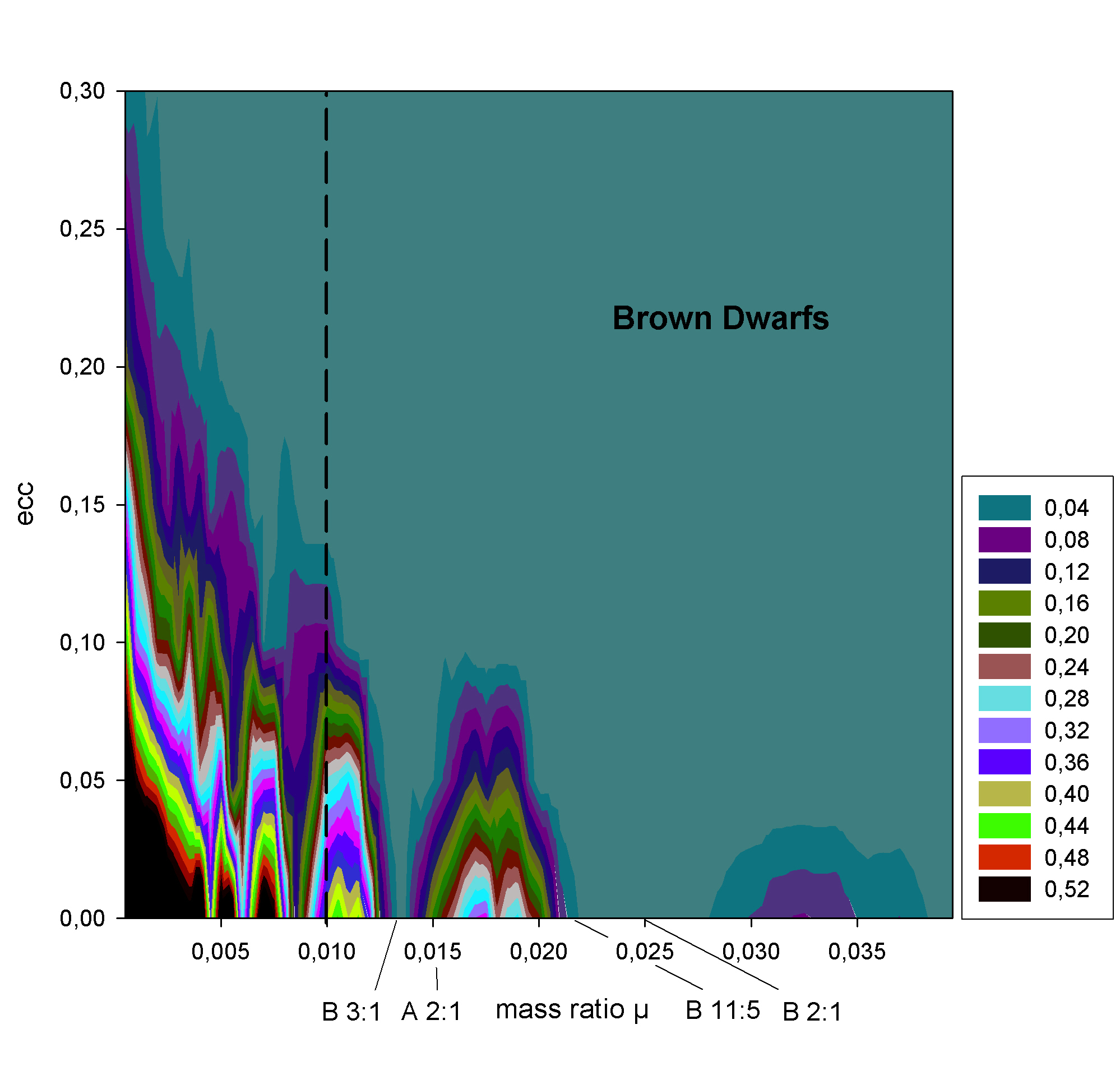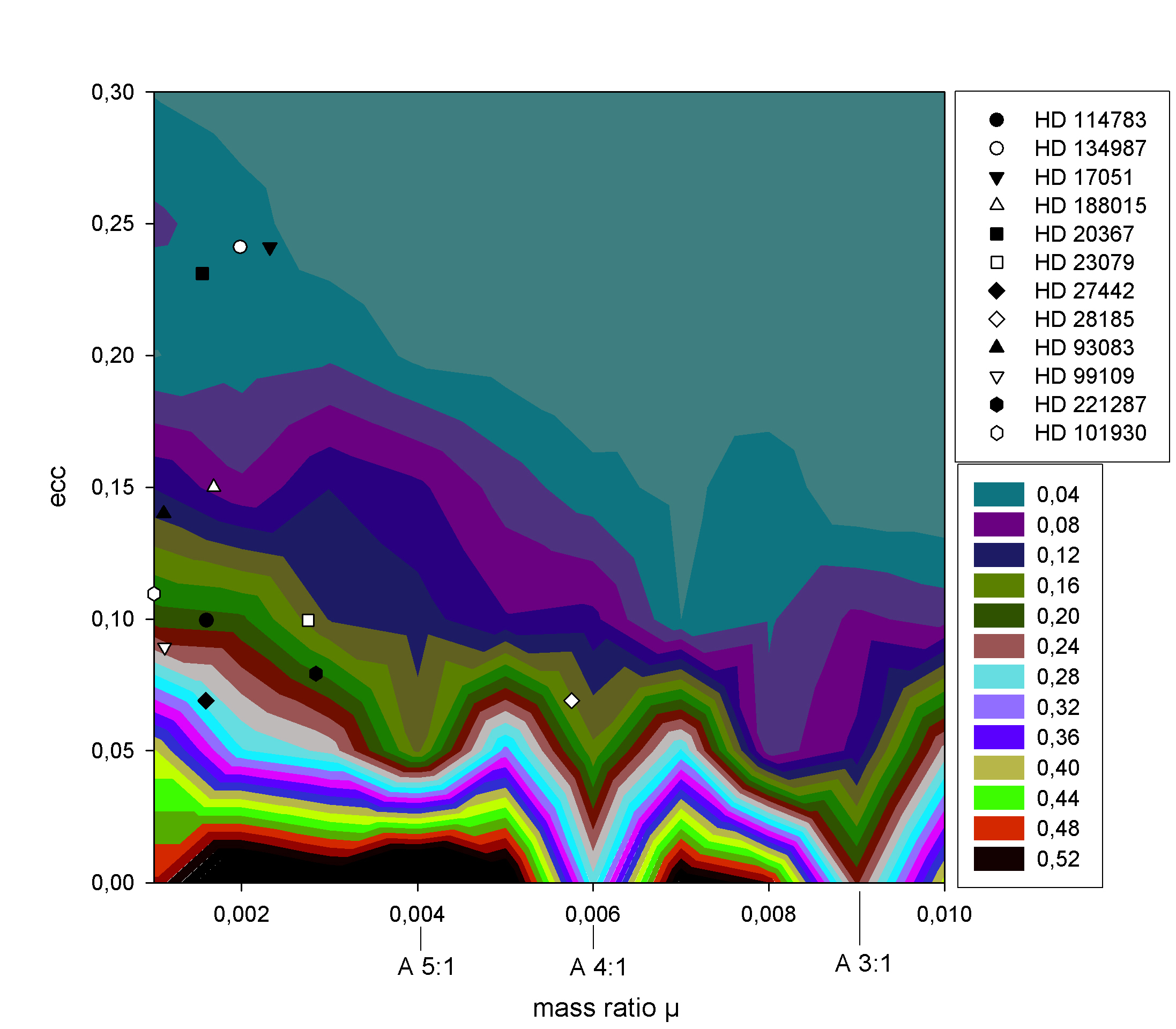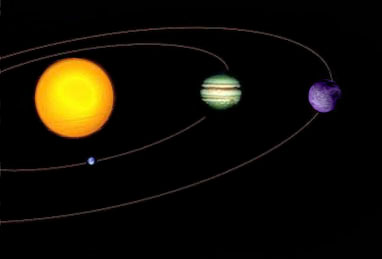Fig. 4 shows Finger-like structures which are separated by high-order resonances between the
libration periods of the massless body. We marked the 2:1 and the 3:1 resonances, which are pointed
out in the work of Érdi et al. (2007b).
Concerning the further mentioned limit of a brown dwarf,
we focused our investigations between 1 and 10 Jupiter masses (Fig. 4) and extended the integration
time from 10^4 periods up to 10^7 periods.
The catalogue was normalised to 1 AU (shown in Fig. 2),
because in most cases the HZ is close to 1 AU for G-stars. If the GG is not at 1 AU distance to
the central star, it is necessary to adapt the stable area. Thus we have to recalculate values of the
stable area from the catalogue to that of the real system. This is only a simple scale transformation:
the axes of the stable area
(a, λ) are scaled to the unit circle at 1 AU and can be easily
recalculated by dividing them by the semimajor axis of the
real system. |
|
Fig. 3

Fig. 4

|
















